Thursday, February 4, 2010
Art Stud 2 Midterm Essay 3
I am eight years old. My little feet in their little heeled shoes make tapping sounds against the blindingly white floor. I let go of my mother’s hand and I run to the place I looked forward to visiting after every trip to the bookstore. A purple dinosaur greets me at the entrance, its muffled voice annoys me. “Dinosaurs are extinct,” I always tell my classmates who like him. But I lose those arguments because, “HE IS NOT, I SEE HIM ON TV!” I ignore the fretful dancing mascot and hurry to the dolls. Everything is so bright, there are too many people. Someone is singing “It’s a small world after all” very loudly. I see the Barbies in their little plastic cases with their pretty dresses that could only be worn by dolls. Everyone insists on giving me Barbies; I always liked the little worlds more. Some people call them Polly Pockets. But each one is a different world, you can’t call them all Polly Pockets! Well, except for those that look like where Mommy puts her makeup and do have a Polly doll in them. The best part about them is the dolls are painted and you never have to worry about where their clothes and shoes are. And they come with stories too. I have Snow White and the six dwarves (I lost Sneezy already), I have Pocahontas, Cinderella, Goldilocks and the Three Bears, and Polly and her Giraffe. Today I am going to get a new set, a magnetic one. Of Beauty and the Beast, and I can make Belle dance without touching her, just like magic. My favorite last week was Pocahontas, but John Smith’s lower half decided to run away, so I need this one. I could think of nothing for days. There is a big smile on my face when I see it, the set is larger than any of the ones I have, and I grab it and hand it to Dada, and the little numbers on the tag mean absolutely nothing.
I am eighteen years old. The toy store is a cavernous hall of light, sweet candy smells, and cheerful music piped in through the overhead speakers. Too cheerful, and still much too loud. Whatever is new is displayed where the shoppers cannot miss it. In the summer, inflatable pools and giant rubber ducks in all the colors of the upper spectrum of the rainbow; at Christmas, waving Santas on toy trains, on tracks laden with snow and surrounded by pine trees. Today the wave boards are on display, skateboards with hinges at the middle like my cousin Mike has. And good grief, they’re worth one month’s allowance and then some. Roland Barthes says that the toy store is essentially a microcosm of the adult world, that French toys prefigure the world of adult functions. I look around and see toys that are indeed miniature versions of reality, but which one? In the little girls’ section, quaint little country cottages with robins on top, waffle makers and pasta makers and easy-bake ovens, toy croissants and Caucasian babies with their blonde hair and blue eyes. In the little boys’ section, pretend high-power rifles, miniature remote control- operated 4x4s and helicopters, plastic swords and shields, police badges that declare “NYPD.” Nearby, shelves upon shelves of board games (or bored games as my cousin calls it), and it is always the section with the most silence in it. I walk to the dolls section, where everything is pink and the floor is a runway, and feel a tinge of envy. Barbie has a Jacuzzi, for crying out loud, and I guarantee that if I put it to scale, it would be bigger than our bathroom.
Here I note the difference between me and Barthes: he was a writer in a first world country. I am a writer in a third world one. (For simplicity’s sake I use the term “third world,” although I’ve always thought it was a misnomer: there is, after all, only one world.) As far as microcosms go, this toy store is a microcosm of all wishful thinking, because the miniatures are all we’ll be able to afford. It could also be economics, supply and demand. Western products are what are on demand, so they are what are on display. Or is it the other way around? It probably doesn’t matter as long as it sells.
But in my opinion, Barthes presents two arguments that are valid even in a setting far removed from where it was formulated. They are both present in the paragraph: “There exist, for instance, dolls which urinate; they have an esophagus, one gives them a bottle, they wet their nappies; soon, no doubt, milk will turn to water in their stomachs. This is meant to prepare the little girl for the causality of housekeeping, to "condition" her to her future role as mother.” This is probably also why toys for the XY children have to do with cars and guns, or essentially, speed and violence… and probably why they cancelled Teletubbies on account of “Tinky Winky is gay.” True, the present adult world may have grown more tolerant towards homosexuality, but certainly not up to the point that “gay” or “lesbian” are words uncensored in the extension of the toy store known as Playhouse Disney. And certainly not words used to generate ideas for toys: we are a long way away from “Gays/Lesbians Section” at the local Toy Kingdom—because parents generally don’t want their children to grow up homosexual.
Toys are a form of priming a child’s psychology, and it serves to perpetuate the current order. But this is often unintentional, as their parents, and their parent’s parents, were once children who went through the same thing. It is convention, it is seen as normative, and as is usually the case, the traditional is seen as right.
I think back to that magnetic Beauty and the Beast miniature world, which I played with for hours and hours, sometimes with a flashlight, until I discovered Harry Potter. It has a castle, glittery blue and purple with towers and turrets, a bridge to the lake where the magnet controller is, a little house for Belle’s father, and a yellow brick road. Belle is in the yellow dress, Beast is wearing coattails, Gaston is in the red Frenchman’s coat with a ribbon tying his long hair back. There is a second version of Beast, his transformed version, wearing the same coattails. Is this a microcosm of the world I grew up in? Certainly not on the literal level, because I have neither seen a castle, nor have I met a person in coattails. On the figurative level, there may be a little resemblance. Beast is a nobleman who falls in love with a peasant girl, the classic class transcendence, a storyline common in today’s telenovelas. But the nobleman has become a capitalist’s son, and the peasant girl works at McDonalds. But even that is ultimately wishful thinking.
The importation of goods, as the importation of concepts like Christianity and the State, has determined many of the dynamics in our country. And it is this process, which extends to all areas of human development, that determines many of our ideals and aspirations. If priming children is done with toys, and if all the toys we see are Western ideas and labels, then is it any wonder why we grow up generally holding everything Western as superior to our own? And it does not end with toys: preschool and elementary textbooks, indeed the entire Philippine education system, is based on Western instruction. In a sense, Roland Barthes is right. Toys are a microcosm of reality. It is only always a question of “whose.”
I am eighteen years old. The toy store is a cavernous hall of light, sweet candy smells, and cheerful music piped in through the overhead speakers. Too cheerful, and still much too loud. Whatever is new is displayed where the shoppers cannot miss it. In the summer, inflatable pools and giant rubber ducks in all the colors of the upper spectrum of the rainbow; at Christmas, waving Santas on toy trains, on tracks laden with snow and surrounded by pine trees. Today the wave boards are on display, skateboards with hinges at the middle like my cousin Mike has. And good grief, they’re worth one month’s allowance and then some. Roland Barthes says that the toy store is essentially a microcosm of the adult world, that French toys prefigure the world of adult functions. I look around and see toys that are indeed miniature versions of reality, but which one? In the little girls’ section, quaint little country cottages with robins on top, waffle makers and pasta makers and easy-bake ovens, toy croissants and Caucasian babies with their blonde hair and blue eyes. In the little boys’ section, pretend high-power rifles, miniature remote control- operated 4x4s and helicopters, plastic swords and shields, police badges that declare “NYPD.” Nearby, shelves upon shelves of board games (or bored games as my cousin calls it), and it is always the section with the most silence in it. I walk to the dolls section, where everything is pink and the floor is a runway, and feel a tinge of envy. Barbie has a Jacuzzi, for crying out loud, and I guarantee that if I put it to scale, it would be bigger than our bathroom.
Here I note the difference between me and Barthes: he was a writer in a first world country. I am a writer in a third world one. (For simplicity’s sake I use the term “third world,” although I’ve always thought it was a misnomer: there is, after all, only one world.) As far as microcosms go, this toy store is a microcosm of all wishful thinking, because the miniatures are all we’ll be able to afford. It could also be economics, supply and demand. Western products are what are on demand, so they are what are on display. Or is it the other way around? It probably doesn’t matter as long as it sells.
But in my opinion, Barthes presents two arguments that are valid even in a setting far removed from where it was formulated. They are both present in the paragraph: “There exist, for instance, dolls which urinate; they have an esophagus, one gives them a bottle, they wet their nappies; soon, no doubt, milk will turn to water in their stomachs. This is meant to prepare the little girl for the causality of housekeeping, to "condition" her to her future role as mother.” This is probably also why toys for the XY children have to do with cars and guns, or essentially, speed and violence… and probably why they cancelled Teletubbies on account of “Tinky Winky is gay.” True, the present adult world may have grown more tolerant towards homosexuality, but certainly not up to the point that “gay” or “lesbian” are words uncensored in the extension of the toy store known as Playhouse Disney. And certainly not words used to generate ideas for toys: we are a long way away from “Gays/Lesbians Section” at the local Toy Kingdom—because parents generally don’t want their children to grow up homosexual.
Toys are a form of priming a child’s psychology, and it serves to perpetuate the current order. But this is often unintentional, as their parents, and their parent’s parents, were once children who went through the same thing. It is convention, it is seen as normative, and as is usually the case, the traditional is seen as right.
I think back to that magnetic Beauty and the Beast miniature world, which I played with for hours and hours, sometimes with a flashlight, until I discovered Harry Potter. It has a castle, glittery blue and purple with towers and turrets, a bridge to the lake where the magnet controller is, a little house for Belle’s father, and a yellow brick road. Belle is in the yellow dress, Beast is wearing coattails, Gaston is in the red Frenchman’s coat with a ribbon tying his long hair back. There is a second version of Beast, his transformed version, wearing the same coattails. Is this a microcosm of the world I grew up in? Certainly not on the literal level, because I have neither seen a castle, nor have I met a person in coattails. On the figurative level, there may be a little resemblance. Beast is a nobleman who falls in love with a peasant girl, the classic class transcendence, a storyline common in today’s telenovelas. But the nobleman has become a capitalist’s son, and the peasant girl works at McDonalds. But even that is ultimately wishful thinking.
The importation of goods, as the importation of concepts like Christianity and the State, has determined many of the dynamics in our country. And it is this process, which extends to all areas of human development, that determines many of our ideals and aspirations. If priming children is done with toys, and if all the toys we see are Western ideas and labels, then is it any wonder why we grow up generally holding everything Western as superior to our own? And it does not end with toys: preschool and elementary textbooks, indeed the entire Philippine education system, is based on Western instruction. In a sense, Roland Barthes is right. Toys are a microcosm of reality. It is only always a question of “whose.”
Subscribe to:
Post Comments (Atom)




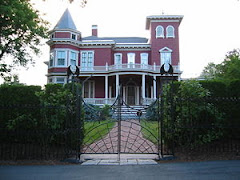
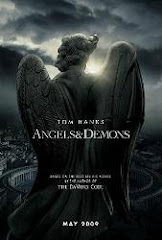
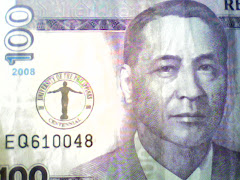

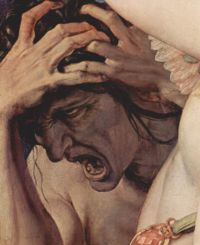

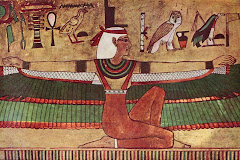
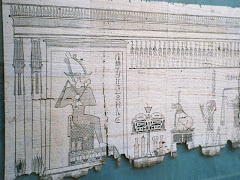


This post is really much more useful for the people who believe that these days if we have to go with the contemporary era then knowledge is the most important piller in each and every area.
ReplyDelete